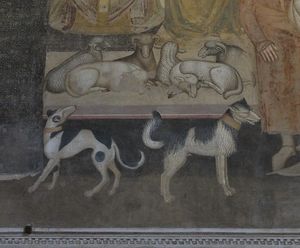Domini Canes – the hounds of God – was a Tuscan pun on ‘Dominicans’, the order to which Girolamo Savonarola belonged. The idea is represented in a fresco painted for the Dominicans by Simone Memmi. Savonarola made it his life’s aim to protect the church of Christ from the corruption in the world, as a dog protects his master’s home from intruders.
The Renaissance was a time when the feudal system was breaking up. Public prominence was no longer the prerogative of the nobility – it could be attained by commercial or artistic success. Humanism began to displace religious superstition, and it was essentially a secular, hedonistic, depraved age. The church was not exempt, and the lives of many of its prelates were a sordid disgrace.
Love of the Scriptures
Into this world Girolamo Savonarola was born in 1452 at Ferrara. He studied at the Academy of Ferrara where he proved a brilliant scholar. Here he encountered the writings of Thomas Aquinas, which gave him a deep lifelong love of the Scriptures. He was a sensitive young man, serious and withdrawn, profoundly saddened by the rampant evil around him and burdened by the deep-rooted moral degeneracy in the church. More and more he began to devote himself to prolonged periods of prayer and fasting.
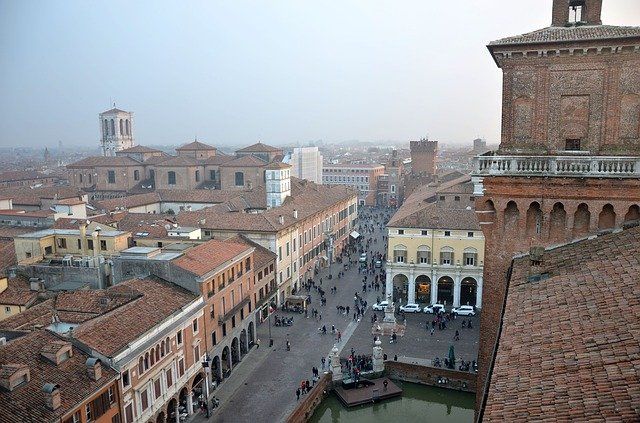
Gradually he became convinced that he should devote himself to the religious life. For several years he wrestled with this conviction because of the pain it would cause his parents, but, at the age of twenty-two, Savonarola became a Dominican monk in Bologna. He asked, and was permitted, to do menial work, abandoning intellectual pursuits in his desire to escape the corruptions of the world, to do penance for his own sins and to deepen his walk with God. He was soon to discover that the spirit of the world pervaded the monastery. Ambition and selfishness were rife among the monks, and he was deeply shocked by the bribery, avarice and immorality that extended throughout the church, even to the pope. He viewed the church as a chaste virgin which had been dethroned by a false, proud harlot, and this impression coloured his dealings with the church hierarchy for the rest of his life.
Move to Florence
Savonarola’s scholastic gifts were discovered, and he was asked to train novices. He was moved to the convent of San Marco in Florence, where he sought above all to engender in his students a love of the Scriptures. The young friar had a growing sense of divine mission in his life. He began to preach, always on the same theme: that the church would soon be scourged and then regenerated.
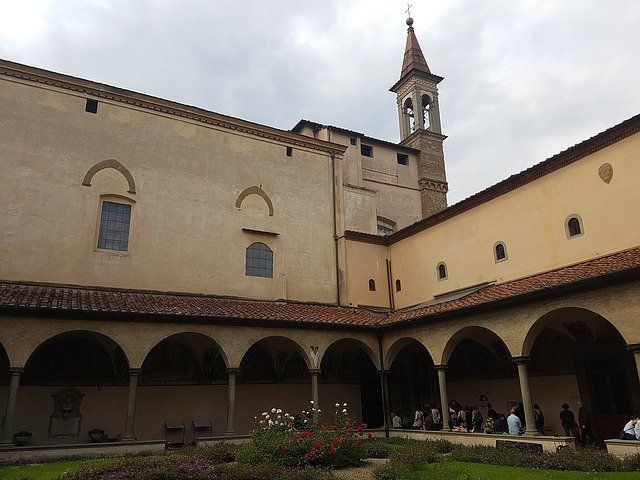
On 1 August 1490, Savonarola announced that his preaching ministry would continue for eight years. His prophetic zeal inspired admiration and enthusiasm and he often made impassioned pleas for a revival of spiritual life and purity. He inveighed against all activities which were either frivolous or pagan and declared that the Scriptures were the only true guide for the soul. He maintained that salvation was by faith in Jesus Christ and through his grace, not by external rituals, and he laid great stress on the importance of Christ’s suffering and death.
But for all that, he failed to break with Catholic dogma. Unlike Luther, he did not recognize that abiding moral reform, particularly in the church, could not be achieved without doctrinal reform. Nevertheless, his fearless courage and unswerving devotion to scriptural truth paved the way for future generations. In anticipation of Luther, he was not afraid to defy the Roman Church, maintaining that when the pope ceased to defend true biblical doctrine, he was no longer Christ’s representative on earth. However, his attempts to impose on people an externally-enforced morality were certain in time to engender rebellion. Before long, the infamous Rodrigo Borgia acceded to the ‘Chair of St Peter’, in the person of Pope Alexander VI, and proceeded to plunge the papacy into unimaginable depths of depravity.
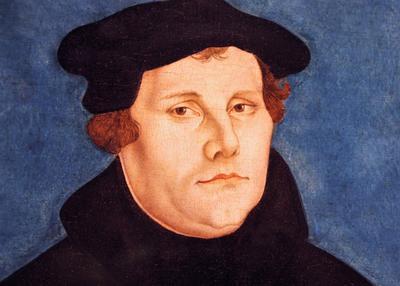
Savonarola likened himself to the Old Testament prophets, and preached fearlessly to all ranks. He declared that he had seen a vision of two crosses in the sky – one a black cross signifying God’s wrath, the other a glorious cross signifying God’s mercy, to which all nations came and bowed down. Later he saw a hand in the sky grasping a sword on which was written, ‘the sword of the Lord upon the earth soon and speedily’. Accounts of visions and predictions of the future became a regular feature of his preaching. He gained credence because many of his predictions came to pass.
Savonarola was appointed Prior of the convent of San Marco in 1490 and set about reforming it. He introduced long hours of prayer, fasting and penitence, and encouraged art and Bible study. He had a reputation for friendliness and cordiality, and a tender, pastoral heart. A series of sermons on Noah’s ark in 1494 succeeded in rousing the public conscience and a revival began, rooted in repentance and faith. Before long his followers became known as piagnoni -weepers.
Backlash
He had set himself against Satan’s kingdom, and the backlash was bound to come. Trouble was brewing for Italy in the form of the armies of Charles VI of France. Savonarola saw Charles as God’s chosen instrument for scourging his country and reforming the church, and played a prominent role in diplomatic negotiations with the King of France. His hopes were sadly disappointed, however, as Charles failed to keep his promises to reform the church.
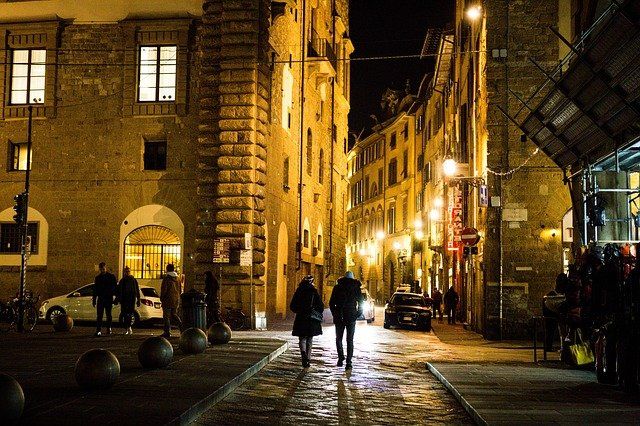
Savonarola threw himself into the political arena. He devised a new political system for Florence, giving more liberty to the people and ending the stranglehold of the Medici family. The city responded to his ideas as if they were divine directives, and his political reforms achieved much public good. Had he concerned himself less with temporal affairs, however, and concentrated on reform of the church, not overlooking the need for doctrinal reform, perhaps the Reformation might have begun a generation earlier. On two occasions he mobilized the youth of Florence to make house-to-house collections of all things frivolous, and of depraved or erotic art. These were then piled into a pyramid and burned. He was, however, no iconoclast. He went to considerable effort and expense to preserve the irreplaceable Medici library, and inspired a number of contemporary artists, notably Michaelangelo and Botticelli. His desire was to elevate art to its highest use – the glory of God. (One wonders what he would have made of the church’s silence today on such matters as the Turner Prize and the Royal Academy’s ‘Sensations’ exhibition!)
At last the backlash came. Control of the ruling Signory passed to his enemies. The pope ordered him to leave Florence, and in the face of repeated prevarication and defiance, excommunicated him. During his preaching ban he wrote a number of tracts and important theological works, including his ‘Triumph of the Cross’, a logical defence of Christian belief as opposed to all other belief systems.

Martyrdom
Savonarola’s political activities made him many enemies, notably among the Franciscans, who challenged him to an ordeal by fire. The gauntlet was taken up on his behalf by Fra Domenico da Pescia, despite Savonarola’s attempts to restrain his impetuous disciple. If Domenico came through the fire unharmed it would be a divine confirmation of Savonarola’s doctrine. Passions in the city ran high on both sides of the dispute.
The unprecedented emotional build-up to this event culminated in anti-climax. While a thunderstorm raged and drenched the pyre, the Franciscans and Dominicans disputed at great length as to whether Domenico might be permitted to carry the eucharistic host with him into the fire. At close of day the Signory stepped in and ordered both parties to return to their convents, and the crowd erupted into violence. A riotous mob surrounded the convent of San Marco, and Savonarola surrendered to the guards who had been sent to arrest him.
Throughout his final period of solitary confinement, Savonarola’s writings reveal a man passing through self-doubt and desperation to a place of peace, trusting in the merits of Jesus Christ for his salvation. Still he expressed that same longing for the restoration of the church. As he had long looked for martyrdom, so he accepted his sentence with placid resignation. He slept blissfully the night before his execution. In 1498, eight years after declaring that his ministry would last for eight years, he was hanged and his body burned.
What should we make of Girolamo Savonarola’s life? He was a godly, fearless man but, like the best of men, human and flawed. He had no spiritual peers to whom he could be accountable; he accorded as much weight to his visions as to the Word of God; and he became preoccupied with political affairs. These things were the Achilles’ heel of his ministry. Nevertheless, five hundred years after his death, it is appropriate to thank God for his example and achievements, especially his passion for righteousness and his unswerving allegiance to scriptural truth, and the doctrine of salvation by faith alone.

